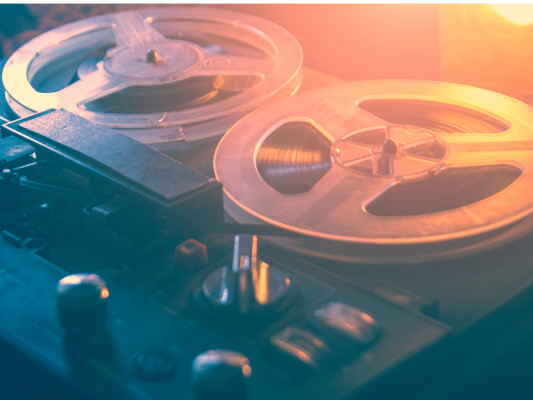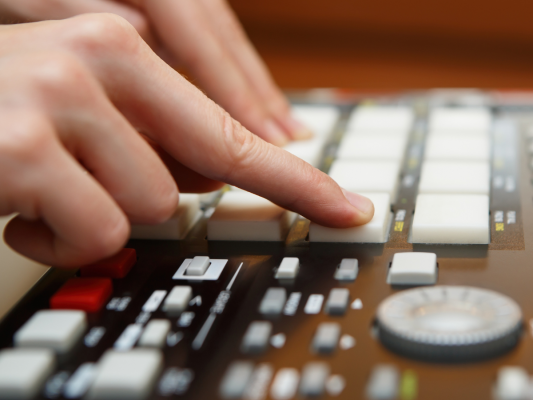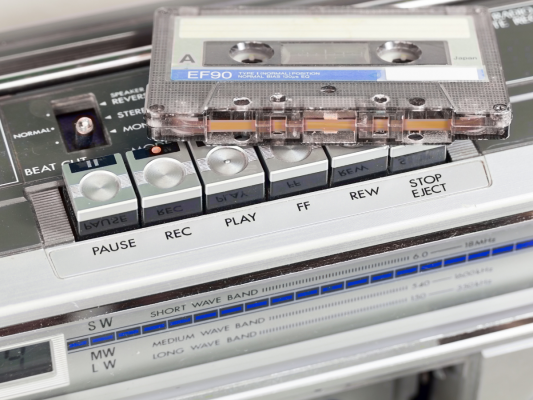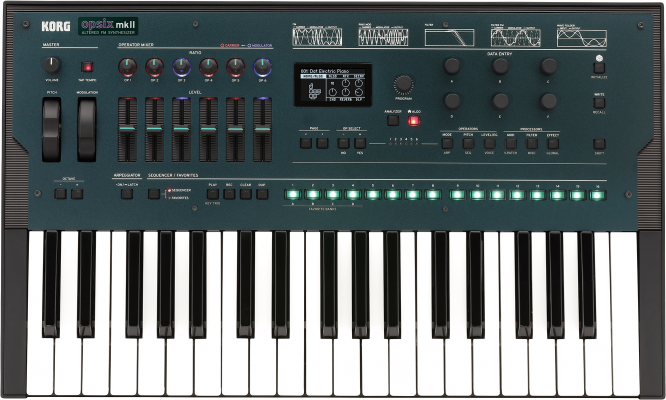So, you’re thinking about starting a DAWless setup. You’re tired of looking at a computer screen all day and just want to get away from the computer and use your hands to make music.
That sounds like a lovely goal! But where do you start?
What is a DAWless setup?
Let’s first talk about what DAWless actually is. A DAW or Digital Audio Workstation is typically referred to as music production software on a computer such as Ableton, Logic, Cubase, etc.
This software revolutionized the recording industry by combining an entire studio inside a little box: the computer. A DAW allows you to record, edit, and mix audio, but also sequence MIDI notes and arrange everything into a complete song.
Working DAWless requires replacing some of these software tools with hardware devices.
The old-school approach
Before computers were a thing, musicians used to record straight to tape. Multitrack reel-to-reel recorders and cassette decks like the Tascam Portastudio allowed simultaneous recording of up to 8 mono tracks.

Editing was impossible, except for recording overdubs and splicing tape. That’s right, the cutting and pasting you’re used to on your computer was once done by literally cutting up tape.
If you’re by yourself this means recording one track at a time, meticulously planning the entire song structure up front, and hoping you wouldn’t screw up while doing so.
Thank god for sequencers & samplers
After a while sequencers were introduced. These machines allow you to record and edit MIDI notes into a complete song from start to finish. Many drum computers also have built-in sequencers which means you’d free up your hands to tweak some knobs, and that’s what we like to do right?

In the 90s, samplers were a godsend, as they allowed producers to sample recordings, edit and manipulate them, and mold them into a track. Enter the era of hip-hop, breakbeats, and the beginning of electronic dance music as we know it.
The DAWless control center

Luckily, today, all of these hardware devices are combined into single units such as Elektrons Digitakt and Octatrack, Akai’s MPC One, or Native Instruments’ Maschine+. These devices are computers in a box with editing functionality every recording studio would have dreamt of 20 years ago.

These multi-function machines are capable of running synths, sequencers, samplers, and mixers and they often come with built-in effects. These are the one-stop shops of DAWless music production. Getting one of these samplers is the way to go if you’re starting in the world of DAWless music production.

The modern tape recorder
Let’s say you’re more into live jamming. You want to gather a bunch of gear to eventually play live on stage, and you’re not concerned with editing and mixing.

In that case, you could think about the analog tape recorder workflow. There are plenty of actual reel-to-reel or cassette recorders to be found on the used market.
But you can also go for the digital equivalent by getting a Zoom Field recorder for example. Hook up two audio leads to this recorder and you’re good to go.

A mixer might come in handy
In case you’re using multiple synthesizers and drum computers, you may want to consider, getting a mixer. Especially if your recorder only has two inputs.
Like many recording studio gear, you get what you pay for. There’s a mix of functionality, sound quality, and affordability.
You can only pick two.
Now, you probably wouldn’t pick up a Neve or SSL console for your DAWless jamming needs. Although SSL has actually got some nice compact mixers. The SSL Six for example is a compact 6-channel mixer.

For DAWless jamming, I recommend a mixer with at least two auxiliary sends. So just like those A and B sends in Ableton, you can connect effect pedals to easily send any instrument to some reverb, delay, distortion, or whatever you’ve got connected.
The number of channels depends on your setup and needs. I’ll dedicate another article to mixers in the future.
Some sequencers like the Octatrack have multiple inputs which you can use as a Mixer as well, so keep that in mind if the physical size of your setup is important to you.
Do you need a drum computer?
If you’ve read my previous articles about drum computers for beginners and advanced producers, you know what’s out there in terms of options. Most drum computers already have some way to control the individual levels of each drum, so getting a separate mixer isn’t always necessary.
Some may come equipped with internal effects while others don’t even have a sequencer, like the Vermona DRM1 for example. Some drum computers may be better suited for the studio than live on stage, so consider that when planning your next purchase.

Another reason I recommend starting your DAWless setup with something like the Digitakt or MPC-One, is that these are actually perfect drum machines by themselves. In that case, you may not even need an external drum computer.
What about synths?
This again depends entirely on your needs. Ambient musicians require a different setup than Techno producers. But in the grand scheme of things, you usually want to get at least two kinds of synthesizers.

You probably want a polyphonic synth to play chords. Korg has some great beginner synths like the Minilogue or Opsix. When you’re recording one track at a time in the studio, this may be all you ever need.

But if you’re playing live you need something that can cover bass sounds as well. In that case, a Moog Minitaur or Behringer TD3-MO may be perfect as a Bass synthesizer.
Effects
Another benefit of a one-stop-shop like the Digitakt is that you get on-board effects. Sometimes you may be looking for a more hands-on approach and in that case, guitar pedals are the ideal tool for the job.
Guitar pedals can be as cheap as a couple of bucks, to the higher end of the price range with brands like Strymon. The most common guitar pedals I recommend to beginners are delay, reverb, and distortion pedals.

If you’ve got a mixer, you can hook these up to your sends and returns, but if not, just connect them directly after the output of your synth or drum computer. Not all guitar pedals work well with synthesizer levels though, so that’s something you may want to try before buying. But you can always get a re-amp pedal if you’re running into noise and distortion issues.
Conclusion
So to summarize. My number one recommendation is to get a jack-of-all-trades machine first. The Elektron Digitakt would be my personal favorite.

But whatever you choose, master it completely before moving on to your next purchase. Often times working with a single piece of gear may seem limiting, but it’s actually quite freeing to your creativity.
Let me know what you think about this article, and if you require any help feel free to send me an email. Also, check out my Electronic Music Studio’s Facebook group to learn more about hardware setups and workflow techniques.











